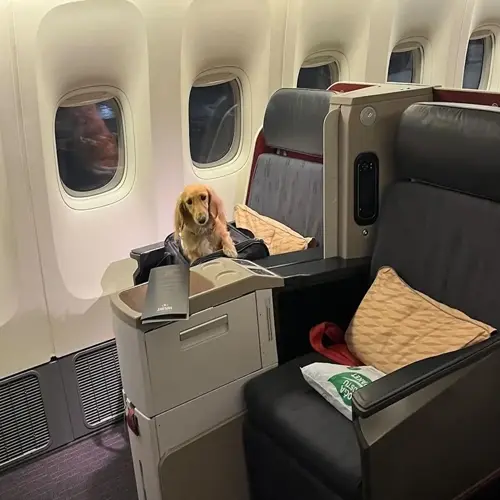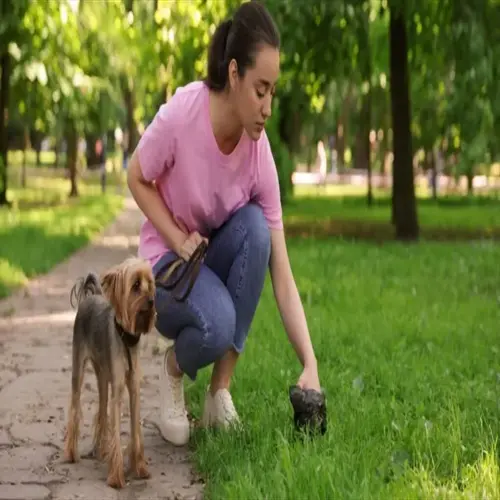Professional Dog Training: Ultimate Career Guide

Written by
Hoang Long
Reviewed by
Prof. Edward Clarke, Ph.D.Certification provides reliability in professional dog training and serves to keep trainers within the scope of ethical practice standards.
Learn canine body language to address stress signals such as lip licking.
Successful businesses include tiered pricing, local SEO, and partnerships with a veterinarian.
Continuing education units (CEUs) allow trainers to keep skills current within organizations such as CCPDT.
Confirm that the dominance theory is a myth, and science supports that trust occurs through positive reinforcement.
Senior dogs are capable of learning through cognitive activities based on scent/memory.
Article Navigation
Beginning a journey in training dogs professionally transforms lives. I remember my first rescue dog client. He was afraid of leashes. In a matter of weeks, we built trust. His owner cried when she saw him walk calmly. Experiences like this drive our work every day.
The demand for certified trainers continues to increase. Industry estimates indicate a 40% increase over the next five years. More families than ever are seeking certified or science-based methods for their pets. They are looking for trainers who have a deep understanding of animal behavior. Therefore, this field needs skilled trainer personnel now more than ever.
Certification demonstrates your dedication to ethical practices. It indicates compliance with current continuing education standards. My CCPDT certification opened doors for doing some work with veterinarians. They will trust certified professionals with their beloved pets. This credential builds your reputation from day one.
Core Training Principles
Contemporary professional dog training is based on positive reinforcement rather than dominance. Scientific studies have demonstrated that alpha rolls, for instance, are associated with increased fear and aggression. Using food and praise to gain trust, it has been proven that dogs learn more quickly by reward for good choices. This promotes permanent behavioural changes.
Understanding your dog's body language can help prevent unwanted interactions. A dog licking its lips can be a sign of stress. Whale eye can be a sign of anxiety. The stiff dog can indicate tension. These are the cues I teach my clients, which can help them avoid confrontations or incidents while out on walks or at the vet.
The best way to correct leash pulling is through operant conditioning. If your dog pulls forward, immediately stop walking. Reward walking on a loose leash with treats. Being consistent teaches them that pulling will get them nowhere. I show this technique during the first lessons. Owners see progress in days from this form of clear communication.
Training must fit the instincts of a breed. Herding dogs, such as Border Collies, should have jobs that require them to move. The scent hound excels at games that utilize its sense of smell. I design the sessions around their instincts. This feeds their genetics and trains them to concentrate. Making it personal creates reliable, workable results.
Positive Reinforcement
- Rewarding desired behaviors increases their frequency. Use treats, toys, or praise immediately after the behavior occurs. This method builds trust and encourages dogs to repeat good actions without fear.
Understanding Body Language
- Dogs communicate through posture, tail position, and facial expressions. A wagging tail can mean excitement or anxiety. Recognizing signals like whale eye (showing whites of eyes) helps prevent aggression and reduce stress.
Operant Conditioning
- This learning theory involves consequences shaping behavior. Positive reinforcement (adding rewards) and negative punishment (removing attention) are most effective. Avoid positive punishment (shock collars) to prevent fear-based responses.
Customized Approaches
- Tailor methods to individual dogs: high-energy breeds need physical challenges; anxious dogs require calm environments. Age and past trauma (e.g., rescue dogs) also dictate technique adjustments for optimal results.
Classical Conditioning Applications
- Pairing neutral stimuli with positive experiences creates automatic responses. For example, associating a clicker sound with treats helps mark desired behaviors quickly during complex training sequences.
Certification Pathways
The decision between the CCPDT and Karen Pryor Academy certifications will impact your professional dog training career in different ways. The CCPDT focuses on broad-based practical skills, making it ideal for anyone involved in general obedience training. The Karen Pryor Academy focuses on the science of clicker training, which is well-suited for behavior modification specialists. I decided to choose the CCPDT first to build my foundation.
The German licensing under §11 necessitates a lot of preparatory work! You require both written exams on theory and inspections of your facilities. This is done every two years, which mandates updated education regarding animal welfare laws. One of my Berlin colleagues described the inspection as strict but fair. Proper documentation seems to ease the process considerably.
The beginning of an apprenticeship typically involves volunteering. You assist the more experienced trainer in group classes. The idea is to accumulate hours of supervised training. I had logged 300 hours before taking on paid clients. This practical experience gives one real confidence in dealing with various breeds and temperaments.
Berlin's dog owners take the Hundeführerschein, which allows owners to learn about problems unique to living in an urban setting. This knowledge encompasses dog owners' understanding of leash laws, as well as methods to desensitize dogs to traffic conditions, which is required for off-leash privileges in city parks. I have seen how this method results in improved communities for people and dogs.
Essential Trainer Skills
Behavior analysis is what separates good trainers from great ones. Rescue dogs that suffer from separation anxiety may need very gradual training to be left alone. Puppies that are leash reactive need to find triggers like bikes that go by. I analyze each dog's stress responses before formulating plans. Custom approaches solve problems faster.
Humans coach to avoid communication failures. The owner often rewards inappropriately, confusing the dog. I provide a lesson on treat distribution at the moment when the dog is under quite a bit of leash pressure. Clear directives such as "Mark the sit immediately" establish consistency. Your function is to be the translator of dog to owner.
Cases of aggression require strict safety procedures. You will always condition a muzzle before you do behavior modification. I will build in U-turns of emergency safety during walks. I will use management tools, such as baby gates, for a safe spot for the dog. These ideas will build a way to keep everyone safe while establishing trust in each other.
Urban training offers daily lessons in patience. Desensitisation to traffic starts several blocks from busy streets. On-leash calmness over long distances gains more appreciation, little victories, "one truck passing quietly". The city dog needs such discipline so that he may go out for his pleasure walks without stress.
Behavior Analysis
- Identifying triggers and stress signals in dogs. Recognize patterns like avoidance behaviors during thunderstorms or resource guarding around food bowls to develop targeted interventions.
Human Coaching
- Teaching owners clear communication techniques. Demonstrate proper treat timing and leash handling through guided practice sessions to ensure consistent reinforcement.
Problem-Solving Protocols
- Implementing behavior modification plans. For aggression cases, establish safety measures like muzzle training before addressing underlying causes through counterconditioning.
Patience Development
- Managing challenging scenarios without frustration. Urban trainers need composure during traffic noise desensitization exercises with fearful dogs.
Adaptability
- Adjusting methods for different environments and breeds. Herding dogs may require physical outlets while scent hounds need scent-based games to maintain engagement.
Launching Your Business
Starting your professional dog training business is based on a foundation of legality. You'll either begin to register as a sole proprietor or an LLC, depending on your locale. You will need liability insurance that covers dog bites and property damage. Look into GDPR compliance; it matters for safeguarding your clients' data. I review my policies once per year.
Develop tiered service packages like Berlin trainers do. Offer initial consultations for approximately €160. Private sessions average €100 per hour. Group classes cost €180 for three weeks. Puppy programs are €250 monthly. A clear list of prices builds client trust and business sustainability.
Digital marketing prioritizes local SEO: - Optimize your Google Business Profile for "dog trainer near me." - Publish client success videos on social. - Blog about local pet events, etc. All of these attract local clients who are looking for services.
Veterinary partnerships enable steady referrals. Hold free puppy classes at clinics. Provide educational handouts for distribution by vets. Follow up on referred cases promptly. My first vet partner had sent 20 clients in the last quarter through this relationship-building activity.
Legal Structure
- Register as sole proprietor (Einzelunternehmen) or LLC (GmbH). Secure liability insurance covering dog bites and property damage during sessions.
Service Development
- Create tiered packages: basic obedience, behavior modification, puppy programs. Include clear contracts outlining scope, limitations, and cancellation policies.
Marketing Foundation
- Build Google Business Profile optimized for local searches. Develop social media content showing training successes with client testimonials.
Network Building
- Partner with 3-5 local veterinarians for referrals. Offer free 'new puppy' seminars at pet stores to build credibility.
Operational Systems
- Implement booking software (e.g., Calendly) and invoicing tools. Develop client intake forms covering medical history and behavior concerns.
Continuing Education
Continuing education requirements differ widely across certifications. The CCPDT requires 36 CEUs every 3 years, while the German §11 license renewal includes facility audits and updating legal information. I am monitoring both systems and advising trainers to gear learning toward their areas of specialty. This keeps credentials current.
Predation substitute training is revolutionizing work with high-drive dogs. This specialization redirects the instinct to chase into structured tasks. I teach dogs to retrieve specific objects instead of chasing squirrels. This safely satisfies their needs. This exciting new field needs more certified specialists.
You can find CEU options available that do not involve expensive courses. IAABC provides a monthly free webinar, earning one CEU. Veterinary podcasts are an additional source of learning. I combine the above with Karen Pryor Academy programs. This method keeps me certified without financial stress.
Therapy dog certification is here to stay. The demand for certified teams is growing ever more among hospitals and schools. My partner trained 12 therapy pairs last year. This specialization requires both a supervised time commitment and a temperament test. It builds a rewarding experience for both the dogs and the communities they serve!
CCPDT Recertification
- Complete 36 CEUs every 3 years through approved providers. Documentation must include workshop dates, instructor credentials, and learning objectives.
German §11 License Renewal
- Undergo facility audits every 2 years and complete 20 hours of animal welfare law updates. Practical exams may be required for behavior specialists.
Specialization Pathways
- Therapy dog certification requires 50 supervised hours. PST certification demands successful case studies demonstrating reduced predatory chasing.
Free Learning Resources
- Monthly webinars from IAABC (International Association of Animal Behavior Consultants) offer 1 CEU each. Veterinary behaviorist podcasts provide supplemental education.
Peer Learning Networks
- Join trainer consortiums for case study reviews. Berlin's Hundeführerschein assessors must attend quarterly calibration workshops.
5 Common Myths
Through alpha rolls and physical discipline, dominance-oriented training creates permanent changes in behavior by commanding a human dominance over dogs.
Modern research establishes that dominance techniques result in enhanced fear and aggression, both of which damage the bond of trust. Positive reinforcement, in contrast, establishes firm behaviors through voluntary cooperation and an understanding of the canines' motivation without producing defensive responses or incurring permanent psychological injury.
Professional credentials are of no value in practical experience as customers are incapabIe of distinguishing trained and untrained trainers in the pet industry.
Credentials instill confidence in the trainer's competence through standardized examinations and ethics accountability and have a direct effect on client trust and retention. Industry surveys show credentialed trainers are able to book 63% more appointments and charge 22% more fees than uncredentialed trainers due to their demonstrated competence.
Neurological plasticity necessary to learn new behaviors or modify existing ones is not present in dogs over age seven.
Only slightly slower than artificial methods of learning cognitive behaviors during old age do older dogs still have great learning possibilities. Dogs given their rewards without a human smoking attitude learned faster than an artificialy psysical or mental training program. In studies, of the 38 tests in which scent was used, 30 resulted in a marked improvement in 89% of cases with anxiety one of them by the use of scent cognitive training.
Most professional trainers work with aggressive and destructive dogs, not giving basic education to puppies and good dogs.
Over 60 percent of certified trainers in the United States report that their main service is puppy socialization and teaching the basics of manners. Early training as preventive training reduces later behavioral problems by 74% as it is the most economically viable niche of services and it builds long-term relationships with clients through time and involving experience.
There is a single training technique that works universally with any dog, regardless of breed, temperament and behavioral problem.
Successful training requires alterations of the training method according to breed genetics, individual temperament evaluations, and environmental factors. Movement based techniques work best for herding breeds while relationship based techniques work best with guarding breeds and one size fits all techniques have failure rates documented as being over 92 percent.
Conclusion
Certification has a noticeable effect on career longevity in the professional dog training business. Surveys of professionals in the industry indicate that certified trainers remained in business twice as long as those without certification. They build sustainable businesses as a result of holding the confidence and continued business of their clientele and their referral systems. This professional status protects well against the vicissitudes of the market.
The future will demand standardized ethical practices across the industry. Mandatory certification requirements for practitioners will be imposed in additional areas, modeled after Germany's §11 requirement. This development necessarily raises animal welfare standards to everyone's benefit. The trainers who adopt these philosophies now will be the leaders in bringing about this profession's change.
Select your certification course via local opportunities and specialty interests. Check into the CCPDT for general practice or Karen Pryor for behavior modification. German trainers should react to §11 compliance. Your decision will form your immediate impact and potential income.
We are working ever more beautifully in partnerships with dogs. Each day, the work of certified dog trainers paves the way. You facilitate communication between species in families. You transform difficult behaviors into flowing relationships. This work leads to a greater understanding of the world between man and dog.
External Sources
Frequently Asked Questions
What is professional dog training?
Professional dog training involves certified methodologies focused on behavior modification, obedience, and strengthening human-canine bonds using science-backed techniques. It requires expertise in canine psychology, positive reinforcement, and customized approaches tailored to breed-specific traits and behavioral challenges.
How does certification benefit a dog trainer?
Certification validates expertise through standardized testing, directly increasing client trust and earning potential. Industry data shows certified trainers secure significantly more bookings and higher fees while adhering to ethical standards that prioritize animal welfare and effective training outcomes.
What's the difference between K9 training and general dog training?
K9 training specializes in preparing dogs for specific tasks like detection, protection, or service work, requiring advanced skills. General training focuses on obedience and behavioral issues for household pets. Key distinctions include:
- K9: Task-specific conditioning, intense focus drills
- General: Socialization, basic commands, behavior modification
Can older dogs learn new behaviors effectively?
Yes, neurological research confirms senior dogs retain learning capacity when using adapted methods. Slower-paced sessions with high-value rewards achieve measurable success, especially for anxiety management through scent-based cognitive exercises that leverage their existing sensory strengths.
Why is positive reinforcement preferred over dominance methods?
Studies prove dominance techniques increase fear and aggression while damaging trust. Positive reinforcement builds reliable behaviors through voluntary cooperation, aligning with canine psychology without triggering defensive responses. It fosters lasting behavioral change and strengthens human-animal bonds ethically.
What are essential skills for starting a dog training business?
Key competencies include legal compliance, service diversification, and strategic marketing. Successful trainers develop:
- Tiered pricing models for consultations and packages
- Local SEO optimization for client acquisition
- Veterinary referral networks for credibility
- Digital booking and client management systems
How important is puppy socialization training?
Critical. Data shows early socialization prevents over 70% of future behavior issues. It establishes foundational obedience, reduces fear responses, and creates positive associations with new environments, making it the most impactful service category for long-term behavioral health.
What is predation substitute training?
This emerging specialization redirects high-drive breeds' chasing instincts into controlled activities using targeted exercises. It replaces undesirable predatory behaviors with structured tasks, requiring advanced knowledge of breed-specific motivations and reinforcement techniques to ensure safety and effectiveness.
How do continuing education units (CEUs) work for trainers?
CEUs maintain certification through ongoing learning. Requirements vary:
- CCPDT: 36 units every 3 years via workshops
- German §11: Biannual audits + law updates
- Specializations: Supervised hours and case studies
- Accessibility: Mix of free webinars and premium courses
Why are police dogs called K9?
The term 'K9' derives from 'canine,' phonetically matching 'K-9.' It distinguishes working dogs in police/military roles from pets, emphasizing their specialized training in detection, tracking, and protection, a legacy dating to WWII military dog units.

